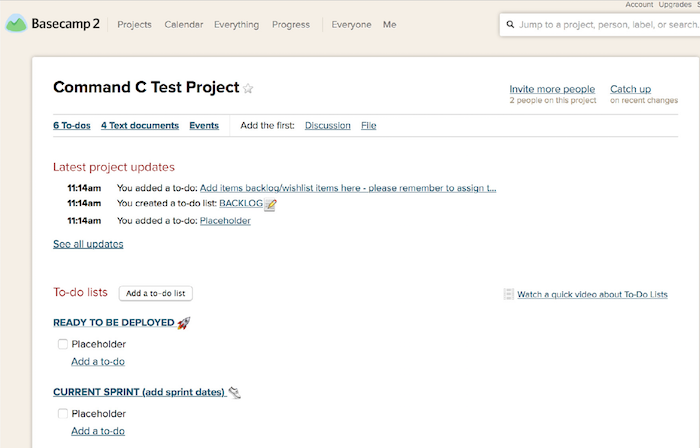Command C’s Secret Sauce for Onboarding Clients
I’m obsessed with our customer’s journey with Command C. It’s always been my vision to build a company that takes extraordinarily complex and technical projects and simplifies the process and delivery for our clients. It’s a daily iteration in the truest sense. While we have overarching procedures and frameworks in place, it’s important to build systems and processes that allow for flexibility – every client is different.
At Command C, process is everything.
One of our core values is adaptability. I’m firmly in touch with the fact that our ability to adapt has kept us relevant for the past 14 years.
What is onboarding?
Simply put, onboarding is the process of familiarizing a client with the way we will be working on their project. We work on a couple of different types of projects. We do a lot of rescue work at Command C. Meaning, when a client is struggling with their current development team, we come in and get their project back on track. We also do full scope projects. They are massive in scope and detail. Those are the two main categories of project, but within each, there are different services that may or may not apply. Each of these services, and the two main types of projects, have different workflows. During onboarding, we communicate the project workflows to the client.

Why is it important?
Our technical team is first class. Their expertise and experience is a significant part of our value. But there is another crucial part of our value – the way we manage projects. Without refinement here, the caliber of our technical team is meaningless. Process is everything for us.
Optimizing how we communicate that process has become my personal mission. I’m constantly trying to envision myself in our clients’ shoes. Most clients end up at Command C because they had challenges in the past. I’m clear that it’s our task to earn (back) their trust and I want to do that as quickly as possible. The onboarding process is a keystone in doing so.

How do we do it?
Like I said, we have several different workflows. Each workflow needs its own process to be articulated. We always iterate first on paper, internally. We create a list of each step we take in a process. Even conditional steps are noted (ie: if it’s this kind of client, then we do this).
Once we have the basic outline, we step back to make sure nothing is missed. We make sure that the steps we take internally are clearly delineated from the steps that are the client’s responsibility. Additionally, we confirm that the process is clearly laid out and that multiple steps aren’t folded into one. We also ask if we’re being too granular: does this need to be spelled out to maintain process integrity? Or is this an area where we can build in flexibility? We then review the order. Is it intuitive? Does it flow?
When we’re confident we’ve gotten the process down, we build client-facing documents like the one included throughout this post. These documents are reviewed with each client. Then we open the door for questions. In our complex technical world, it’s imperative to clearly set expectations.

The tool landscape.
Communicating about what tools we’ll be using is also important. It helps the client know how and when to use each tool and preemptively answers a lot of questions. We do this by providing a document that identifies each of the tools we use and when to employ each one.
The iterative mindset.
The most important part of our processes is our iterative mindset. In the tech landscape, things change every day. What we do changes every day. We’re never working on the exact same project twice. To account for that, we’re constantly turning the mirror back on ourselves and asking “does this work?”
We also extend this mindset to our clients. Processes and boundaries are integral, they enable us to measure our success, but without flexibility they can become a liability. When we walk our clients through our onboarding documents, we also note that this is the overarching framework , but we’re open to adjustments as they make sense. The process for making adjustments is to bring it up in one of our meetings – anyone can propose an adjustment, and we’ll discuss it. If there’s team buy-in, we’ll change it.
In conclusion.
Setting clear expectations is what keeps our relationships with our clients healthy. If they are left wondering, there’s a breakdown in trust, and the relationship suffers. The onboarding process is our method of setting and maintaining clear expectations with everyone in our organization and with our clients.
